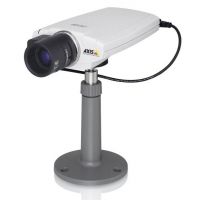10 Most Important Advantages of Network IP Cameras Over Analog Cameras. Part 3.
10 Most Important Advantages of Network IP Cameras Over Analog Cameras. Part 3
IP video surveillance allows you to build a fully digital video surveillance system, which will not have unnecessary transformations that take place in CCTV video surveillance systems. Although CCTV systems are also called digital today, let's figure out why IP video surveillance transmits a truly digital image, and CCTV systems can only be conditionally called digital.
Let's analyze step by step the movement of a video frame from its capture by the camera to the receipt of this frame on the monitor connected to the video recorder or the monitor of a remote surveillance post.
1) The observation area in front of the camera lens is a stream of light with different wavelengths (different colors) and different intensities (brighter, darker), this image is perceived by the matrix of the surveillance video camera, at the output of which there is an analog signal, giving an idea of the observation picture in front of the camera in the form of information about which areas of the matrix were illuminated and which were not. This is the first step — where we have analog information.
2) Step 2 or first transformation – data from the matrix is digitized by the camera’s processor (DSP), i.e. it is a sequence of ones and zeros that make up an “image map” in digital format.
3) Step 3, second transformation – the information obtained at the previous stage is converted back into analog (high and low voltage levels) for subsequent transmission via coaxial cable.
4) Step 4, the third conversion — the analog signal from the coaxial cable is converted again into digital for recording on a digital video recorder (DVR) and subsequent display on a monitor or remote transmission over the network.

Accordingly, with each step of the conversion, the image quality will deteriorate.
What does IP video surveillance offer to replace this algorithm? Everything is quite simple here — only one conversion actually occurs — from an analog image to a digital stream, which goes directly from the camera over the network to the PC on which recording and monitoring is carried out or to a remote workstation over the global network. And no additional transformations are performed, so the image quality is not damaged.

Author: Dmitry Morozov, Personal and Business Security
